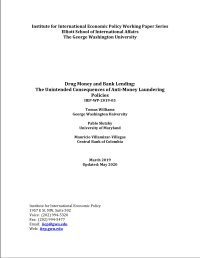By Jack A. Blum; Michael Levi; R. T. Naylor; and Phil Williams
While there has been a general trend towards enacting money-laundering laws that provide for the lifting of financial secrecy in appropriate cases, such secrecy remains a barrier in many jurisdictions, including some of those that have come to be known as 'financial havens'. The advances in technology and communication have made the three F's - finding, freezing and forfeiting of criminally derived income and assets all the more difficult. This publication discusses these issues and other related problems in depth. The law enforcement success stories presented convey a sense of imaginative ways in which financial havens are used. The cases also highlight the advantages, from the point of view of criminals, of collusion with bank employees and the use of professional launderers.
Vienna: United Nations Office for Drug Control and Crime Prevention, 1998, 117p.




